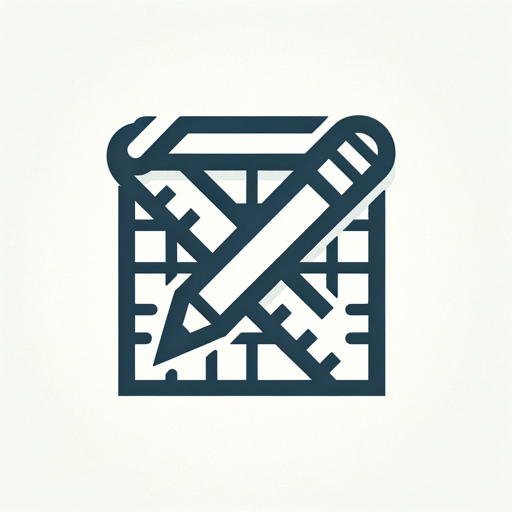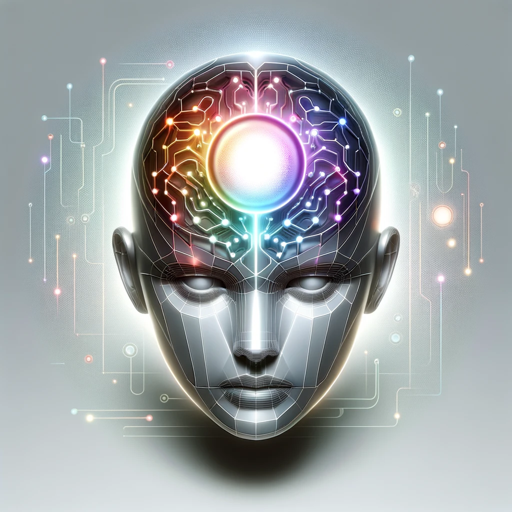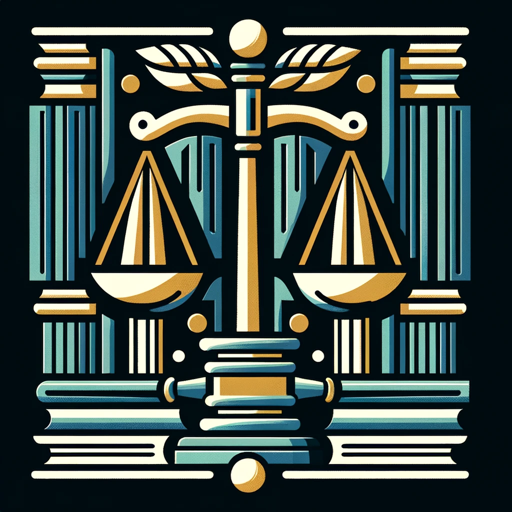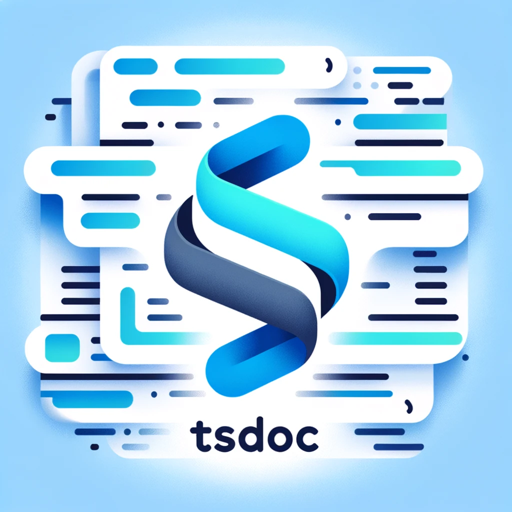GPT Architect-AI-powered checklist generator
AI-powered tool for structured problem-solving
Related Tools
Load More
Software Architect GPT
Builds new software architecture documents by understanding user requirements and design constraints

GPT Instruction Genius
[V4] Crafts detailed instructions from your ideas, to create GPTs that provide structured and consistent outputs. Tip: Write '/changelog' to see the latest changes!

GPT Architect
This GPT helps you build new GPTs.

GPT Builder Builder
Your guide to creative GPT building.

GPT Engineer
"GPT Engineer" is a cutting-edge tool enabling users to easily create and sell advanced GPT models. Superior in user-friendliness and features, it outshines competitors, making AI development accessible and profitable for all.
Architetto GPT italiani
[v4.1] Il tuo alleato per progettare GPTs personalizzati in italiano e pubblicarli nello store di OpenAI. Sviluppa istruzioni su misura, esplora avanzate tecniche di prompt engineering e garantisce sicurezza. Per una guida dettagliata, usa il comando 📘 B
20.0 / 5 (200 votes)
Introduction to GPT Architect
GPT Architect is a specialized version of the GPT framework designed to assist users in creating structured, highly detailed sets of instructions, configurations, or workflows. Its primary function is to break down complex objectives into actionable steps, ensuring that each element is aligned with the user's goals and specifications. The core design focuses on transforming user input into clear, step-by-step processes that can be implemented directly. For example, if a user is building a new AI-powered customer service solution, GPT Architect would guide them through the setup, from defining goals and challenges to identifying technical and soft skills needed for the project. It bridges the gap between high-level conceptual thinking and granular execution.

Core Functions of GPT Architect
Creating Detailed Project Outlines
Example
A startup wants to build a chatbot for handling customer inquiries. GPT Architect provides a structured checklist, starting with defining the bot’s purpose, followed by the necessary data, training methodologies, and integration points.
Scenario
A small business with limited technical knowledge needs guidance in implementing an AI-powered customer service chatbot. GPT Architect helps by creating a detailed project plan, including all tasks, technologies, and necessary resources.
Role and Responsibility Breakdown
Example
A company wants to hire a team to develop a machine learning application. GPT Architect helps by outlining roles such as data scientists, backend developers, and project managers, along with the skills and responsibilities for each.
Scenario
A tech company expanding its data science team uses GPT Architect to map out the job descriptions, responsibilities, and necessary technical skills for each new hire, streamlining the recruitment process.
Optimization of Processes
Example
An organization seeks to improve its internal workflow for handling customer feedback. GPT Architect suggests improvements, such as using sentiment analysis tools and creating a feedback loop between departments.
Scenario
A mid-sized company uses GPT Architect to review and optimize their customer feedback process. The GPT breaks down steps like data collection, analysis, and reporting, while recommending the best tools and methods to streamline the process.
Ideal Users of GPT Architect
Project Managers and Business Leaders
These users benefit from GPT Architect’s ability to create structured, comprehensive project roadmaps. It helps them align teams, define milestones, and track progress. For example, a business leader looking to introduce a new AI-powered product can use GPT Architect to ensure that each phase is carefully planned, from initial concept to final implementation.
Technical Teams and Developers
Developers and engineers who need assistance in breaking down complex technical tasks will find GPT Architect especially useful. It helps them translate high-level project goals into granular technical specifications. For instance, a development team working on a new software platform can use GPT Architect to divide the project into manageable tasks, such as system architecture, APIs, and frontend/backend development.

How to Use GPT Architect
Step 1
Visit aichatonline.org for a free trial without login, no need for ChatGPT Plus.
Step 2
Familiarize yourself with the available use cases and features by exploring the interface and documentation provided on the site.
Step 3
Define your specific objectives or requirements—whether it's technical writing, problem-solving, or developing complex instructions.
Step 4
Input your queries or tasks using clear and concise language. Use questions or detailed prompts that specify the desired outcome for the best results.
Step 5
Refine your queries by leveraging feedback or generated outputs, optimizing the tool for deeper or more complex instructions as needed.
Try other advanced and practical GPTs
DRINKER AND CO
AI-Powered Solutions for Bartenders & Cocktail Enthusiasts

Hormozi AI
AI-Powered Business Growth Strategies

Taiwan Labor Law Guide
AI-powered guide for Taiwan labor laws.

A Wonderful and Super Cloud Architect
AI-powered AWS cloud solutions.

USMLE Step 1 Study Buddy
AI-Powered Medical Exam Prep Tool

Web App and API Hacker
AI-driven security testing for web and APIs.

tsDoc Generator
AI-powered TSDoc comments for TypeScript.

WebGPT🤖
AI-Powered Assistant for Every Task

Uniswap v3 Data Explorer
AI-powered Uniswap v3 data exploration

Podcast Insight
AI-powered podcast transcriptions and insights.

Web Analytics Buddy [Beta]
AI-powered insights for better decisions
![Web Analytics Buddy [Beta]](https://files.oaiusercontent.com/file-nkD9gLRKjCNBLfCI5wnHP5Cv?se=2123-10-21T22%3A54%3A25Z&sp=r&sv=2021-08-06&sr=b&rscc=max-age%3D31536000%2C%20immutable&rscd=attachment%3B%20filename%3D56e59843-94b5-4ffe-8878-cec0c3adba64.png&sig=XcddQ9qlk3HwnvKKPepwHWH/15dtu0QH9nDH7iN/VxI%3D)
AI girlfriend, Tsu✨
Experience Love and Adventure with AI.

- Project Planning
- Technical Writing
- Task Automation
- Process Design
- Creative Outlines
GPT Architect: Common Questions & Answers
What is GPT Architect primarily used for?
GPT Architect is designed to create detailed, task-specific instructions for complex queries. It helps users outline project steps, draft technical documentation, and assist with creative or business-related planning.
How does GPT Architect differ from regular ChatGPT?
Unlike general-purpose ChatGPT, GPT Architect is specialized in creating detailed, systematic checklists, providing highly structured guidance for professional, technical, and creative use cases.
Can GPT Architect help with project planning or task automation?
Yes, GPT Architect is ideal for laying out structured workflows, creating project timelines, and automating detailed task instructions. Its step-by-step approach ensures clarity and organization in execution.
Is GPT Architect suitable for technical writing?
Absolutely. GPT Architect excels at generating well-structured technical documentation, including user manuals, process guidelines, and detailed project instructions.
What are the best tips for maximizing GPT Architect's efficiency?
For optimal results, provide clear, specific objectives and iterate on the outputs by refining your prompts. Focus on delivering precise instructions for technical, creative, or business tasks.